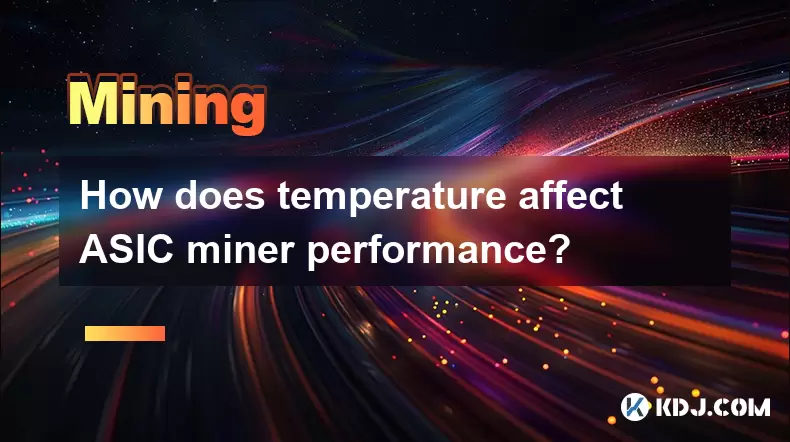-
 Bitcoin
Bitcoin $121,713.8152
3.06% -
 Ethereum
Ethereum $3,041.6437
2.42% -
 XRP
XRP $2.9499
5.12% -
 Tether USDt
Tether USDt $1.0000
-0.02% -
 BNB
BNB $704.1034
1.75% -
 Solana
Solana $166.7523
2.91% -
 USDC
USDC $0.9999
0.00% -
 Dogecoin
Dogecoin $0.2052
2.90% -
 TRON
TRON $0.3011
-0.47% -
 Cardano
Cardano $0.7461
1.42% -
 Hyperliquid
Hyperliquid $48.3650
1.12% -
 Stellar
Stellar $0.4548
3.52% -
 Sui
Sui $3.9527
14.50% -
 Chainlink
Chainlink $16.3300
5.87% -
 Bitcoin Cash
Bitcoin Cash $511.8016
1.25% -
 Hedera
Hedera $0.2395
1.40% -
 Avalanche
Avalanche $21.6526
2.06% -
 UNUS SED LEO
UNUS SED LEO $9.0073
-0.23% -
 Shiba Inu
Shiba Inu $0.0...01369
2.61% -
 Toncoin
Toncoin $3.0335
0.66% -
 Litecoin
Litecoin $96.6206
1.72% -
 Monero
Monero $355.1673
5.35% -
 Polkadot
Polkadot $4.0839
2.47% -
 Uniswap
Uniswap $9.3282
9.72% -
 Dai
Dai $0.9997
-0.01% -
 Ethena USDe
Ethena USDe $1.0004
-0.04% -
 Pepe
Pepe $0.0...01248
1.07% -
 Bitget Token
Bitget Token $4.4642
2.68% -
 Aave
Aave $325.0626
6.81% -
 Bittensor
Bittensor $418.1482
6.22%
How does temperature affect ASIC miner performance?
High temperatures reduce ASIC miner efficiency by lowering hash rates, increasing power consumption, and triggering thermal throttling, emphasizing the need for optimal cooling.
Jul 14, 2025 at 06:21 pm

The Impact of Temperature on ASIC Miner Performance
ASIC (Application-Specific Integrated Circuit) miners are specialized hardware devices designed to perform the hashing algorithms required for cryptocurrency mining. These machines operate continuously under high computational loads, which generates significant heat. Temperature plays a critical role in determining the efficiency, longevity, and profitability of ASIC miner operations.
Heat Generation in ASIC Miners
ASIC miners are built with hundreds of processing units that run simultaneously to solve cryptographic puzzles. This constant activity results in substantial heat generation. The internal components, including the hashing chips and power supply units, can reach temperatures well above 70°C during normal operation. Without proper cooling mechanisms, this heat can degrade performance or even damage the hardware over time.
Effects of High Temperatures on Mining Efficiency
When an ASIC miner operates at excessively high temperatures, several negative effects may occur:
- Reduced Hash Rate: As temperature increases, the electrical resistance within the circuits also rises. This leads to slower processing speeds and a decrease in the overall hash rate, which directly impacts mining rewards.
- Increased Power Consumption: Higher temperatures can cause the miner to consume more electricity as it struggles to maintain optimal performance levels. This reduces energy efficiency and increases operational costs.
- Thermal Throttling: Many modern ASIC miners come equipped with thermal protection systems. If internal temperatures exceed safe thresholds, these systems will automatically reduce clock speeds to prevent overheating, further lowering mining output.
Optimal Operating Temperature Ranges
Most ASIC miners function best within a specific temperature range. While exact figures vary by model and manufacturer, a typical ideal operating temperature lies between 50°C and 75°C. Maintaining temperatures within this range ensures that the miner performs efficiently without triggering protective shutdowns or risking long-term component degradation.
Some miners include firmware settings that allow users to adjust fan speeds and power limits based on ambient conditions. Proper configuration of these settings is essential to maintaining stable temperatures and maximizing uptime.
Cooling Solutions for Effective Temperature Management
To mitigate the adverse effects of high temperatures, miners deploy various cooling strategies:
- Air Cooling: This involves using high-speed fans to circulate air around the mining rig. It's the most common and cost-effective method, but its effectiveness depends heavily on ambient room temperature and airflow design.
- Immersion Cooling: In this advanced method, miners are submerged in a thermally conductive but electrically insulating liquid. This technique provides superior heat dissipation and is gaining popularity in large-scale mining farms.
- Custom Ventilation Systems: Some mining setups incorporate ducting and industrial-grade HVAC systems to maintain lower ambient temperatures. Such infrastructure investments can significantly improve miner stability and lifespan.
Environmental Factors Influencing ASIC Miner Temperatures
Ambient temperature and humidity levels in the mining environment play a crucial role in miner performance. High ambient temperatures make it harder for cooling systems to dissipate heat effectively, leading to higher internal component temperatures. Additionally, excessive humidity can cause condensation inside the hardware, increasing the risk of short circuits or corrosion.
Miners located in regions with naturally cooler climates often enjoy lower operational costs due to reduced reliance on artificial cooling systems. Selecting an appropriate location with good ventilation and moderate humidity levels is vital for maintaining optimal miner temperatures.
Frequently Asked Questions (FAQ)
Q1: Can low temperatures negatively affect ASIC miners?
Yes, while high temperatures pose risks, extremely cold environments can also be harmful. Sudden exposure to cold after high heat can cause condensation inside the device, potentially damaging sensitive electronics. It's important to maintain a stable and moderate thermal environment.
Q2: How can I monitor the temperature of my ASIC miner in real-time?
Most ASIC miners come with web-based interfaces or software dashboards where you can view real-time temperature readings. You can also use third-party monitoring tools or scripts to track and log temperature data remotely.
Q3: Is it safe to overclock an ASIC miner if temperatures remain within acceptable ranges?
Overclocking increases both performance and heat output. Even if temperatures appear manageable, overclocking can accelerate wear and tear on components, reducing the miner’s overall lifespan. Always proceed with caution and ensure adequate cooling support.
Q4: Do different mining algorithms impact ASIC miner temperatures differently?
Yes, some algorithms require more intensive computations than others. Algorithms with higher complexity can lead to increased power consumption and heat generation, even if the ambient conditions remain unchanged.
Disclaimer:info@kdj.com
The information provided is not trading advice. kdj.com does not assume any responsibility for any investments made based on the information provided in this article. Cryptocurrencies are highly volatile and it is highly recommended that you invest with caution after thorough research!
If you believe that the content used on this website infringes your copyright, please contact us immediately (info@kdj.com) and we will delete it promptly.
- MoonBull, Crypto Race, Melania Hype: Decoding the Meme Coin Mania
- 2025-07-15 02:30:12
- Southeast Asia: Deep Incubation Fuels Investment Boom
- 2025-07-15 02:30:12
- MANTRA, Google Cloud, and the $OM Surge: What's Driving the RWA Revolution?
- 2025-07-15 02:35:12
- XRP's Wild Ride: Implied Volatility and Potential Price Swings
- 2025-07-15 01:10:12
- Altcoin Companies Launch: HYPE's Bold Nasdaq Move & Promising Altcoins to Watch
- 2025-07-15 01:50:12
- Crypto, Ethereum, Tokens: What's Hot in the NYC Crypto Scene?
- 2025-07-15 01:55:13
Related knowledge

How are crypto mining profits taxed?
Jul 14,2025 at 12:28am
Understanding Cryptocurrency Mining and TaxationCryptocurrency mining involves validating transactions on a blockchain network and earning rewards in ...

How to keep a mining rig cool
Jul 12,2025 at 01:42pm
Understanding the Importance of Cooling in Mining RigsCryptocurrency mining is an intensive process that places heavy demand on hardware components, p...

How much does it cost to start crypto mining?
Jul 13,2025 at 12:22am
Understanding the Basic Costs of Crypto MiningStarting crypto mining involves several upfront and ongoing expenses. The primary costs include hardware...

What is the most profitable crypto to mine?
Jul 13,2025 at 07:00am
Understanding Mining Profitability in CryptocurrencyWhen evaluating the most profitable crypto to mine, it's essential to consider several factors tha...

What do I need to start mining crypto?
Jul 13,2025 at 12:28am
Understanding the Basics of Crypto MiningCrypto mining is the process by which transactions are verified and added to a blockchain, and new coins are ...

How does crypto mining work?
Jul 13,2025 at 11:01am
Understanding the Basics of Crypto MiningCrypto mining is the process through which new cryptocurrency coins are introduced into circulation and trans...

How are crypto mining profits taxed?
Jul 14,2025 at 12:28am
Understanding Cryptocurrency Mining and TaxationCryptocurrency mining involves validating transactions on a blockchain network and earning rewards in ...

How to keep a mining rig cool
Jul 12,2025 at 01:42pm
Understanding the Importance of Cooling in Mining RigsCryptocurrency mining is an intensive process that places heavy demand on hardware components, p...

How much does it cost to start crypto mining?
Jul 13,2025 at 12:22am
Understanding the Basic Costs of Crypto MiningStarting crypto mining involves several upfront and ongoing expenses. The primary costs include hardware...

What is the most profitable crypto to mine?
Jul 13,2025 at 07:00am
Understanding Mining Profitability in CryptocurrencyWhen evaluating the most profitable crypto to mine, it's essential to consider several factors tha...

What do I need to start mining crypto?
Jul 13,2025 at 12:28am
Understanding the Basics of Crypto MiningCrypto mining is the process by which transactions are verified and added to a blockchain, and new coins are ...

How does crypto mining work?
Jul 13,2025 at 11:01am
Understanding the Basics of Crypto MiningCrypto mining is the process through which new cryptocurrency coins are introduced into circulation and trans...
See all articles

























































































